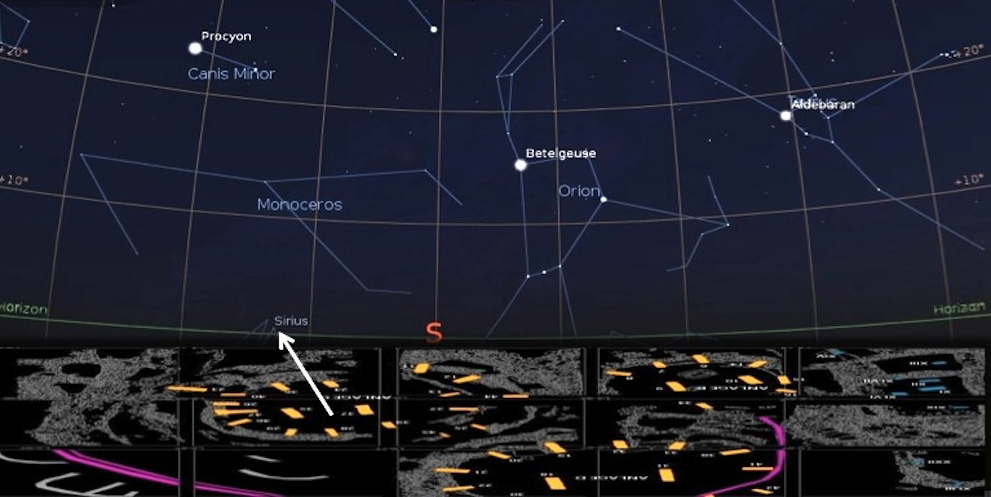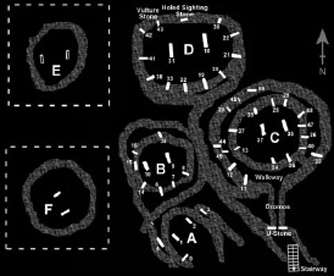An interesting suggestion by Giulio Magli is that the monuments of Gobekli tepe were aligned to the rising point of Sirius, particularly so because at that latitude Sirius had only just began to be visible above the Southern horizon after a prolonged absence due to precessional effect
The megalithic enclosures of Gobekli Tepe are the most ancient stone-built sacred structures known so far, dating back to the 10th millennium BC. The possible presence of astronomical targets for these structures is analysed, and it turns out that they may have been
oriented – or even originally constructed - to “celebrate” and successively follow the appearance of a “new”, extremely brilliant star in the southern skies: Sirius.
Sirius and the project of the megalithic enclosures at Gobekli Tepe
So this would be Sirius as herald of a new age as it were, and over the millenia it would continue to rise ever higher into the skies of the Northern hemisphere, achieving maximum elevation at the present thereabouts.
In fact, simulating the sky in the 10th millennium BC, it is possible to see that a quite spectacular phenomenon occurred at Gobekli Tepe
in that period: the “birth” of a “new” star, and certainly not of an ordinary one, as it is the brightest star and the 4th most brilliant object of the sky: Sirius. Indeed precession, at the latitude of Gobekli Tepe, brought Sirius under the horizon in the years around 15000 BC. After reaching the minimum, Sirius started to come closer to the horizon and it became visible again, very low and close to due south, towards 9300 BC.

...the extrapolated mean azimuths of the structures (taken as the mid-lines between the two central monoliths) are estimated
as follows:
Structure D 172°
Structure C 165°
Structure B 159°
As Sirius is a negative magnitude star, it is in principle visible just above the horizon; I will however allow in what follows an altitude of ½ ° (actually the horizon at the site estimated via satellite images looks flat towards the south-east). Then, it can be seen that the above azimuths match the rising azimuths of Sirius in the following approximate dates:
Structure D 172° 9100 BC
Structure C 165° 8750 BC
Structure B 159° 8300 BC

So what he is saying is that enclosures were added in accordance with the shifting rising point of Sirius according to precession, but it can also be seen that the former alignment to Sirius has become an alignment to Orions belt, others have considered alignment to that and to some degree the monument can be considered to both at the same time, and not necessarily one or the other.
He looks toward other alignments such as toward the Summer Solstice, and the origins of an interest in the helical rise of Sirius;
As a final observation, it should be noted that a further structure uncovered at Gobekli Tepe has an estimated azimuth of 59° (if it was open to the north-east, as it seems) which is pretty close to that of the rising sun at the summer solstice.
On the pillar 43 of enclosure D a suggestive, unique scene is represented: a sort of vulture with human traits delicately “rises up” with a wing what seems to be a sphere, or a disk. May this be a representation of the Heliacal rising of the newly born star we today call Sirius, which – as can be easily verified - occurred just a few days before the summer solstice at the end of the 10th millennium BC at the latitude of Gobekli Tepe?
So anyway i find this all very interesting and it would explain quite a few traditions of later times...

